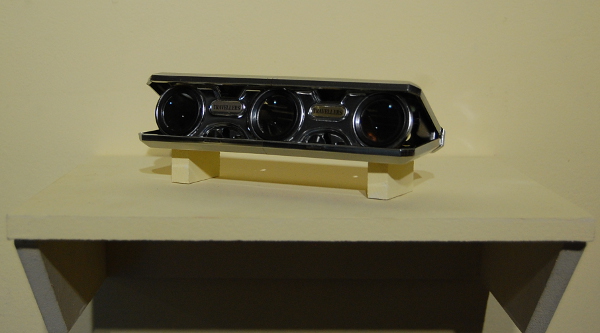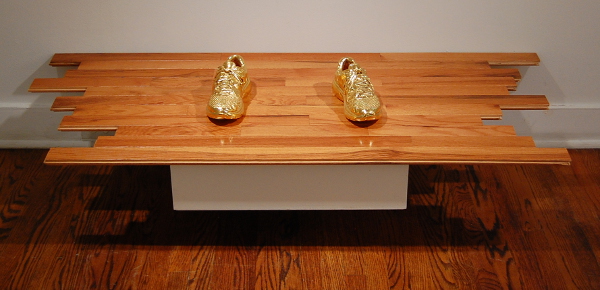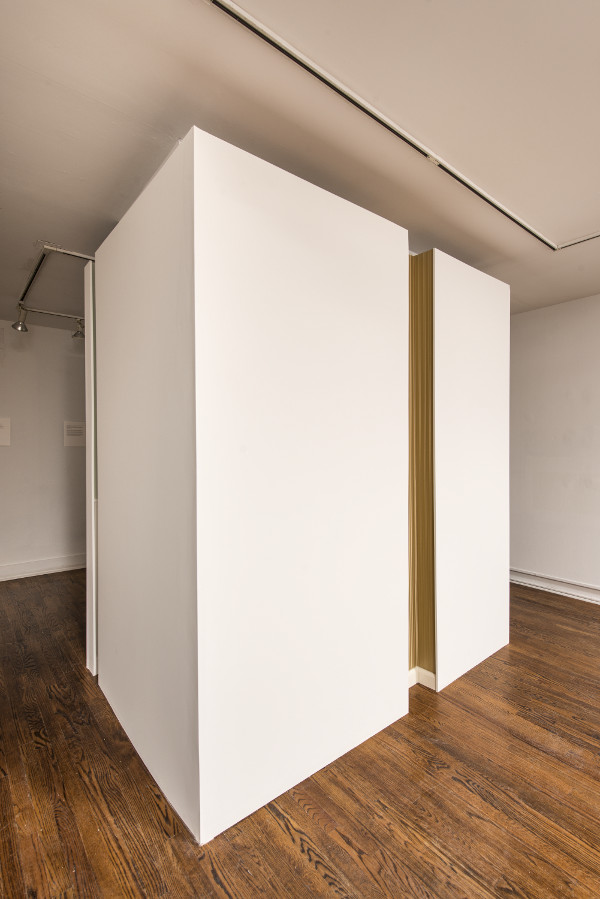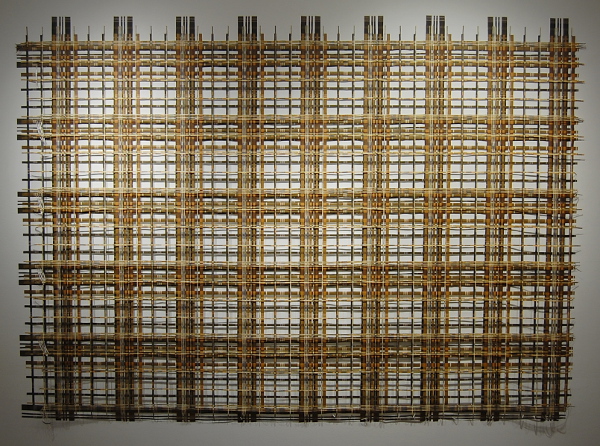
Christina Day at Philadelphia Art Alliance upends the everyday
Human beings are far from the only creatures that construct habitations for themselves, but the process of architecture certainly poses significant challenges that other species are blissfully ignorant to. At the Philadelphia Art Alliance, these very same obstacles become objects for alteration, investigation and amusement at the hands of artist Christina P. Day for her exhibit “Fifth Wall.” The title of the show is derived from the interiors industry which sought to encourage the addition of wallpaper to ceilings in order to fully encapsulate a room, and while Day does not take this specific marketing advice to heart, she does manage to interpret spaces in unexpected ways.
When she is not busy inverting interiors or exposing all three dimensions of wallpaper, Day finds herself retooling humble objects in ways that subvert their function or at least pose playful quandaries for her audience. Before even entering the gallery where the bulk of the work resides, we discover a pair of opera glasses resting on a shelf besides the doorway… except the term pair itself is deceptive. Although jeans, scissors and binoculars are typically referred to as ‘pairs,’ they are of course singular articles consisting of two conjoined parts. Turning this strange linguistic trope on its head, Day adds a third lens to the center of the opera glasses, presumably not just so that our third eye may witness the final aria, but also because it’s simply ridiculous.
Christina P. Day, “Practice: Contrapposto in Nike Vomero 8’s.”
In a culture where more is often synonymous with better, three lenses doesn’t seem too far-fetched. Golden sneakers definitely don’t either – they are already a thing (see Michael Johnson, et al.) – but Day doesn’t just design a shiny shoe, she takes old trainers and coats them in actual 24k gold. Not only would the stiffness and lack of breathability be an issue here, but who would actually threaten one of the planet’s most desired substances with the wear and tear of an athletic shoe? The pair of shoes (in this case pair indeed refers to a duo) rests on a raised platform topped with wooden planks that are not too dissimilar from the true floor that lie a foot below. This false floor is where the architectural elements start to become distinct from the artist’s other items.
Even when remodeling clothing or tools, Day’s approach is notably structural as she coats, deconstructs, and assembles things like one might restore an old piece of furniture or stain a deck. This emphasis on building and fabrication in her non-architectural objects makes adapting her sculptural skills for actual construction an easy transition.
Christina P. Day, “Shift #2.” Photo by Jaime Alvarez
On one end of the gallery, there stands a large white box or column that doesn’t quite reach the ceiling. Upon closer inspection, there are a couple of very thin openings on two adjacent sides of this structure. Like a typical hallway, these passages are diligently painted or wallpapered and fit with molding and other fixtures, except they are scarcely large enough to fit someone’s leg inside. In this way, these interiors are so inside that we can hardly even perceive them. It seems rational to assume these rifts end shortly out of sight, but our imaginations prefer to follow them into some other realm entirely, concocting what strange reading room or even otherworldly dimension exists therein – and all this information from a small sliver of décor, no less.
Christina P. Day, “Shift #2.” Photo by Jaime Alvarez
As the artist approaches the wallpaper referenced in the show’s title, she prefers careful dissection to application. Unsurprising that Day would take this nearly opposite approach to wallpaper’s intended function, she slices and dices a greenish colored plaid paper into a three dimensional parody of its very pattern. On the wall (or ceiling) this paper would become a background, but in this form it becomes an oddity worth studying. Is this wall hanging actually woven? Is the intricate overlay of lines and rectangles found in plaid patterns always so interesting? If so, flannel shirts might well be art pieces in their own right.
Christina P. Day, “Reverb.”
The back wall of the gallery displays paper as well, but not even remotely the type we would anticipate. Day inexplicably includes five sheets of standard sized printer paper to counter the deconstructed plaid. Instead of weaving lines, she weaves words here, concocting vivid imagery of a bus journey. With the rest of the show in mind, the text becomes more texture and the sentences a sort of stepped configuration as we slowly begin to see the design behind the content. Maybe this is what Christina Day has been getting at all along, though.
By bringing the surfaces and materials that pervade the world around us into a strange new light, Christina P. Day asks us to look more deeply at the things we take for granted. Even in the simplest of places it is possible to find intellectual stimulation, and when plaid is turned from pattern to potentiality, every shirt on the street becomes a starting point. “Fifth Wall” will be on view through November 30.
The Philadelphia Art Alliance is located at 251 South 18th St., Philadelphia; [email protected]; philartalliance.org.
Recent Content
-
Artsarticle ·
-
Artsarticle ·
-
Artsarticle ·




